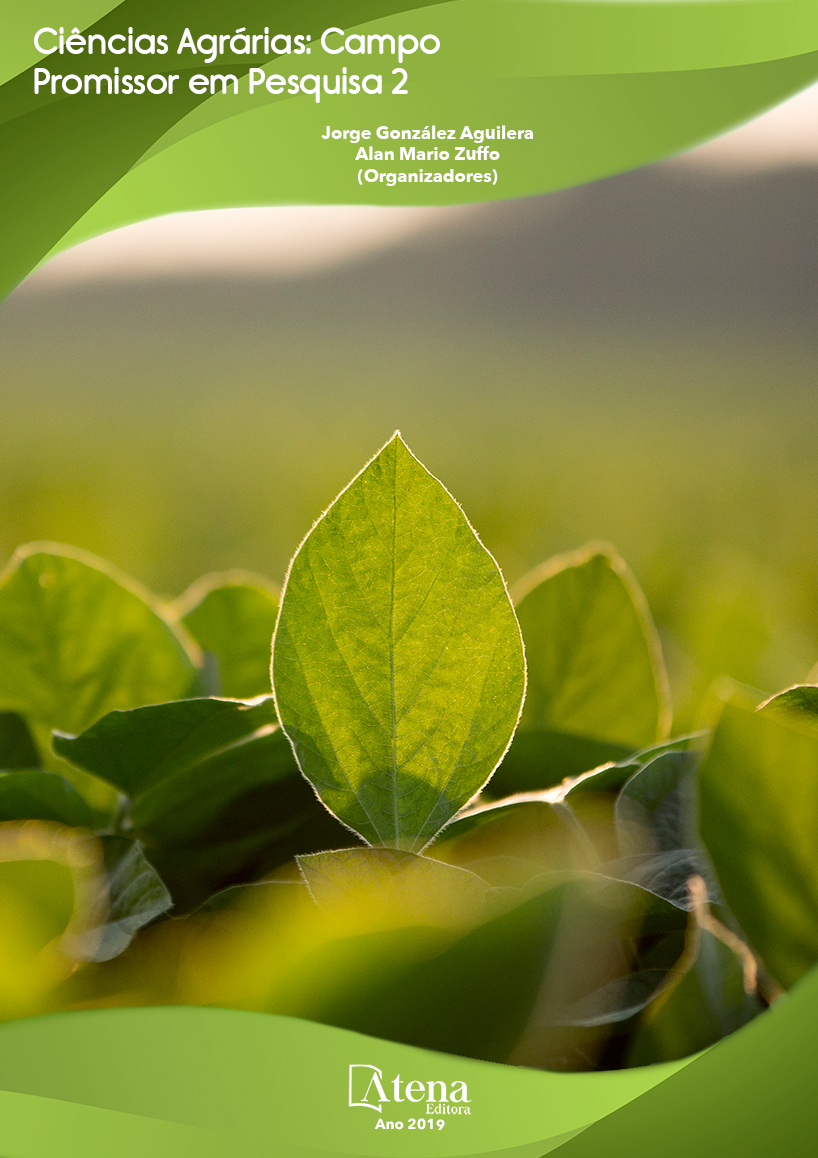
COMBINAÇÕES DE DIFERENTES FONTES DE ADUBOS ORGÂNICOS NO CULTIVO DA BETERRABA EM COLORADO DO OESTE RONDÔNIA
A Beterraba é uma das principais
hortaliças cultivada no Brasil, contudo sua
produção esta concentrada na região centrosul
do país. Neste contexto, é necessária
a realização de pesquisas que viabilizem
conhecimentos e tecnologias alternativas de
adubação para garantir a viabilidade econômica
de seu cultivo em outras regiões brasileiras.
Com base nestes fatos o trabalho teve como
objetivo avaliar o desempenho agronômico da
beterraba submetida a diferentes fontes de
adubos orgânicos na região cone sul do estado
de Rondônia, buscando uma alternativa na
produção desta olerícola de grande importância
econômica. O delineamento experimental
utilizado foi de blocos casualizados com quatro
repetições. Utilizaram seis tratamentos: T1 –
Testemunha adubação química; T2 – Adubação
química + Biofertilizante; T3 – Adubação
química + Fertipeixe; T4 – Composto Orgânico
+ Fertipeixe; T5 – Composto Orgânico +
Biofertilizante e T6 – Adubação química +
Biofertilizante + Fertipeixe. Aplicação do
Fertipeixe e biofertilizante foram realizadas
via foliar, na dosagem 3% cada semana, após
o transplantio das mudas. Todos os canteiros
receberam uma adubação química de fundação,
de acordo com análise do solo. A área total de
cada canteiro foi de 2,64 m², contendo oito
fileiras espaçadas de 25 x 10 cm. A colheita
foi realizada 90 dias após a germinação, para
determinação dos dados. Foram avaliados
os parâmetros produtividade em Kg/ha, pH,
diâmetro transversal (DT) e diâmetro longitudinal
(DL). Não houve diferença estatísticas para os
parâmetros, produtividade, pH e DT, já para
o DL, teve diferença, o tratamento Fertipeixe
proporcionou um maior diâmetro (84,95 mm).
COMBINAÇÕES DE DIFERENTES FONTES DE ADUBOS ORGÂNICOS NO CULTIVO DA BETERRABA EM COLORADO DO OESTE RONDÔNIA
-
DOI: 10.22533/at.ed.16019200610
-
Palavras-chave: Composto orgânico, Biofertilizante, Fertipeixe.
-
Keywords: Organic compound, Biofertilizer, Fertipeixe.
-
Abstract:
The beetroot is one of the main
vegetables grown in Brazil, however your production concentrated in the Center-South
region of the country. In this context, it is necessary to carry out research that enable
knowledge and technology of fertilization alternatives to ensure the economic viability
of your cultivation in other Brazilian regions. On the basis of these facts the work aimed
to evaluate the agronomic performance of beet subjected to different sources of organic
fertilizers in the southern cone region of Rondônia State, seeking an alternative in the
production of this olerícola of great economic importance. The experimental design was
of randomized blocks with four repetitions. Used six treatments: T1 – Witness Corollas;
T2-Chemical Fertilizer bio-fertilizers; T3-Chemical Fertilizer Fertipeixe; T4-Organic
Compound Fertipeixe; T5- organic compound Biofertilizer and T6-Chemical Fertilizer
Biofertilizer Fertipeixe. Application of Fertipeixe and biofertilizer were performed via
foliar, in 3% dosage each week, after the transplanting of seedlings. All beds have
received a chemical fertilizer Foundation, according to soil analysis. The total area of
each construction site was 2.64 m ², containing eight rows spaced 25 x 10 cm. The
harvest took place 90 days after germination, for determining the data. Productivity
parameters were evaluated in Kg/ha, pH, transverse diameter (DT) and longitudinal
diameter (DL). There was no statistical difference for parameters, productivity, pH and
DT, DL, had difference Fertipeixe treatment provided a larger diameter (84.95 mm).
-
Número de páginas: 15
- Dayane Barbosa Pereira
- Luiz Cobiniano de Melo Filho
- Maria Eduarda Facioli Otoboni
- Darllan Junior Luiz Santos Ferreira de Oliveira


